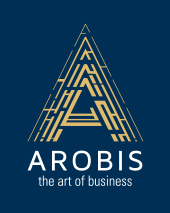Transform your organization for digital future and help your business to acheive more by adapting to rapid changes. Is your business running or crawling? Rearchitect your legacy system to enable rapid transformation.
The only constant in life is change. Don’t let yourself slow down. Modernize your system and be prepared to innovate. Leverage modern techniques to make your software adaptable to rapid changes. Grow and improve at the same time. Reduce your maintenance costs. Be a high-performer.
Have I heard that somewhere?
Nowadays, IT systems play a key role in the company’s business processes. The inability to develop the system significantly reduces the ability to react to the dynamic market. Constant change is certain, so having system that can adapt to that changes is a decisive factor in success or failure in achieving company goals.
If you don’t feel like this is an issue in your company, let us ask you a few questions:
- Have you heard that a given functionality cannot be done because everyone is afraid of touching this part of the system?
- Have you heard that it will take months or years to make a change to your system, even though the change seems relatively simple?
- Do you spend more time maintaining the system instead of developing it?
- Have you heard your customers or employees complaining that your system is unreliable, slow, old?
- Do you need an army of testers to test everything manually after each change because you are afraid of regression?
- Do you need an army of administrators to keep your system running?
- Is it difficult for you to find employees who will be responsible for the development of the system because the technology is outdated and nobody wants to work with it?
- Do months pass from the idea to its implementation instead of days / week?
- Does the system slow down your people instead of accelerating the execution of business processes?
- Have you already tried to modernize this system but it ended in failure?
If you answered YES to at least one question, see how we can help you solve these problems by making your legacy system architecture evolutionary.
How it works?
We start working on current tasks from the first day. We not only provide functionalities and bug-fixes, but together with the business we try to optimize the delivery of business value (80/20 principle).
Along with the implementation of tasks, we are introducing automated tests. Then we do continuous code and architecture refactoring, making architecture more testable which allows to introduce more automation. Step by step, the system experiences evolution. Tests are written in Domain-Specific Language (agreed with domain experts), which act as Executable Specification, ensuring that documentation lives with the modernized system.
At the beginning, we follow your software development process – your tools, approaches and practices. We don’t want to introduce revolution in your project. During this time, we evaluate the quality of the system and the development process, and then we may start implement more advanced practices.
We know that learning your business and making an evolutionary system is a process, so we treat our cooperation as a long-term relationship (rather years than months). This investment is profitable for both parties.
We specialize in working with legacy systems and we treat this work as a challenge. Therefore, we are not afraid of any legacy system – even those in which there is a really big technical debt. Our framework is ready for even the biggest challenges.
Benefits
With each day of our collaboration, your system will be:
- more adaptive to changes
- less expensive
- easier to develop and maintain
- more competitive
- more reliable and stable (no regression)
- more developer-friendly (developer experience)
Which brings you the following benefits:
- increased operational efficiency
- reduced costs
- quicker response to the customer needs
- better employer branding and lower specialist churn
- ability to reposition your specialist from low-value tasks to essential tasks
- ability to improve your system complience
| Area | Before | After |
|---|---|---|
| Implementation time of the new functionality | weeks, months | hours, days |
| Time to release new functionality | months, years | minutes, hours |
| Main cost activity | maintenance | development |
| System quality | unreliable, slow, unstructured | reliable, efficient, modularized |
| Number of manual tests and QA staff needed | very high | low |
| Frequency of finding defects | often | rarely |
| Documentation | outdated | always up to date |
| Developer experience | low, unappealing | high, attract talents |
| Team organization | Low cooperation, siloed teams, organized around technical concerns | High cooperation, cross-functional teams, organized around business capabilities |
| Business support | inhibits innovation | enables innovation |




